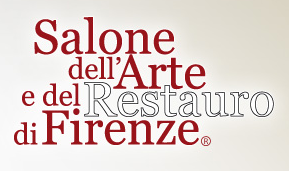Friday, November 9, 2012 hours 11:30
Recent excavations and restorations at Pyrgos
 CYPITA PYRMAC Cypriot Italian Project on Pyrgos-Mavroraki Conservation in collaboration with: DAC Department of the Antiquities of Cyprus - MAE Ministero degli Affari Esteri - MIBAC Ministero per i Beni e le Attività Culturali: Direzione Generale per le Antichità - CNR Consiglio Nazionale delle Ricerche: ITABC - Università Gabriele D'Annunzio, Chieti: CAAM - Istituto Universitario l'Orientale, Napoli - Museo Nazionale Preistorico ed Etnografico Luigi Pigorini, Roma - Cyprus Herbs ltd. di Yannulla & F.Lazarou, Cipro - Associazione Culturale “Armonia”, Roma CYPITA PYRMAC Cypriot Italian Project on Pyrgos-Mavroraki Conservation in collaboration with: DAC Department of the Antiquities of Cyprus - MAE Ministero degli Affari Esteri - MIBAC Ministero per i Beni e le Attività Culturali: Direzione Generale per le Antichità - CNR Consiglio Nazionale delle Ricerche: ITABC - Università Gabriele D'Annunzio, Chieti: CAAM - Istituto Universitario l'Orientale, Napoli - Museo Nazionale Preistorico ed Etnografico Luigi Pigorini, Roma - Cyprus Herbs ltd. di Yannulla & F.Lazarou, Cipro - Associazione Culturale “Armonia”, Roma
Friday, Novembre 9 from 11,30 a.m. to 12,15 p.m. - Saletta Rosi
Cavaniglia Pavilion, Fortezza da Basso, Florence
The Missione Archeologica Italiana di Pyrgos a Cipro, co-financed since 1998 by the Ministero degli Affari Esteri, is directed by Maria Rosaria Belgiorno. Since the year 2011 the activities conducted in the site of Pyrgos/Mavroraki are included in the project CYPITA-PYRMAC “Cypriot Italian Project on Pyrgos-Mavrorachi Conservation”, approved by the Department of Antiquity of Cyprus. The archaeological survey is currently discovering an architectural complex of almost 7000 square meters of the third Chalcolithic millennium BC. The complex was probably destroyed by an earthquake and abandoned in 1850 B.C.
Of particular importance is the discovery of the industrial area organized around the production of olive oil, for the refining of copper, the production of bronze objects, the extraction of aromatic essences in olive oil and half for the distillation preparation of perfumes, the preparation and dyeing of textile plants and animals, weaving, and the preparation of pharmaceuticals. The importance of the site lies not only in its identity as industrial complex, but also in the integrity of the Middle Bronze Age levels, which, through a series of archaeometric surveys permit us to reconstruct the process, the methodologies and the techniques used 4000 years ago.
A second building was discovered and brought to light south of the industrial area. This is a unique construction, consisting of three rooms arranged in a triangular area. The building was probably used for cultural activities. Many finds and materials were found in this area, including 4 calcarenite horns of different sizes, a number of broken idols and many animal sacrificed bones (mainly fragments of heads of bull and rams and tens of shaped shellfound).
Based on the collected data, it appears that the main activity was the metallurgy, of which there are tools and ovens, as well as thousands of slag, fragments of crucibles, anvils, fusions and other artefacts. However, the site is known for the discovery of the perfume factory which now appears to be a unique site not only for antiquity, but for the completeness of the equipment and furnishings ceramic, which has no comparison even in the Middle Age. A series of most recent discoveries made during the excavations of 2012 refers to a laboratory for the production of jewellery in picrolite housed in a building adjacent to the temple area.
Speaker: Maria Rosaria Belgiorno
web site |